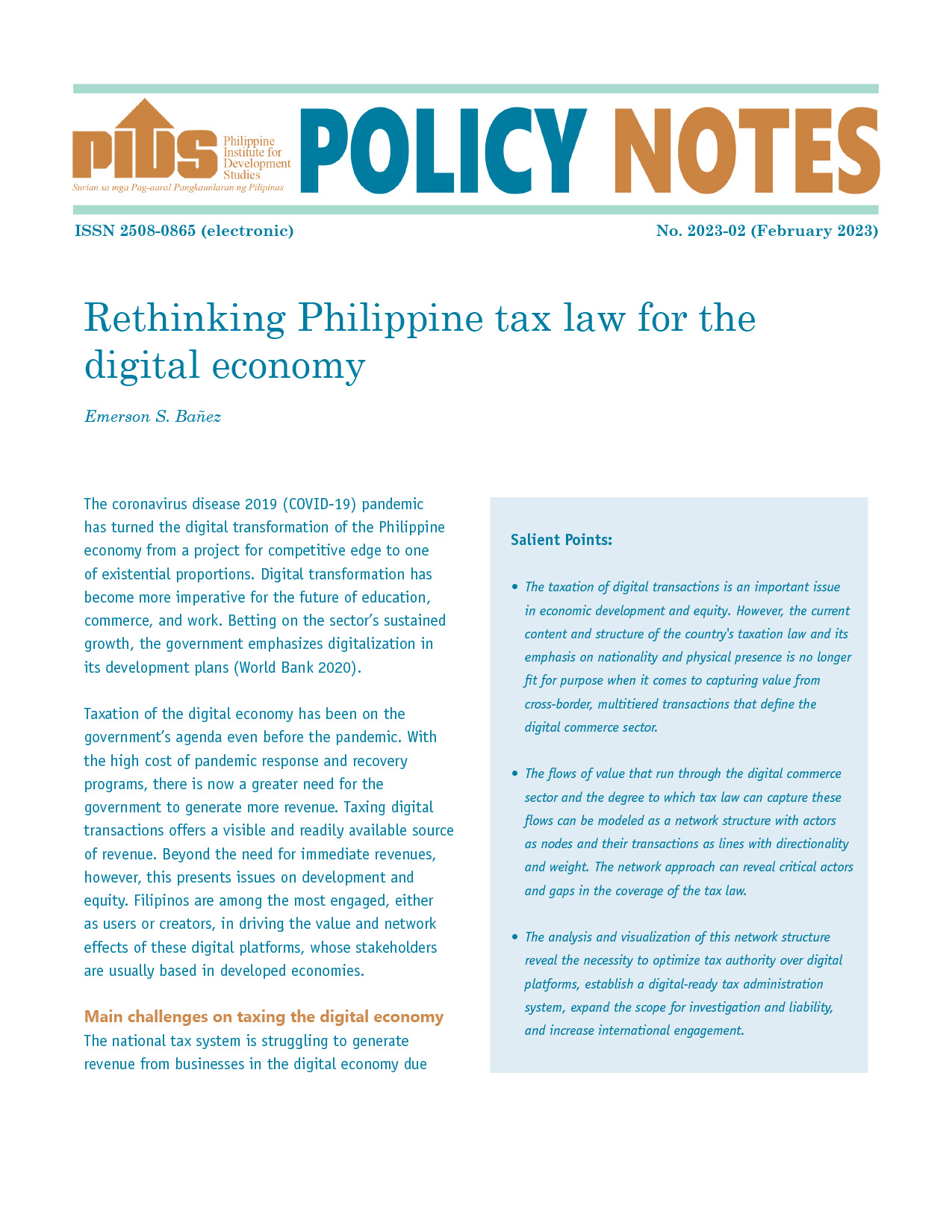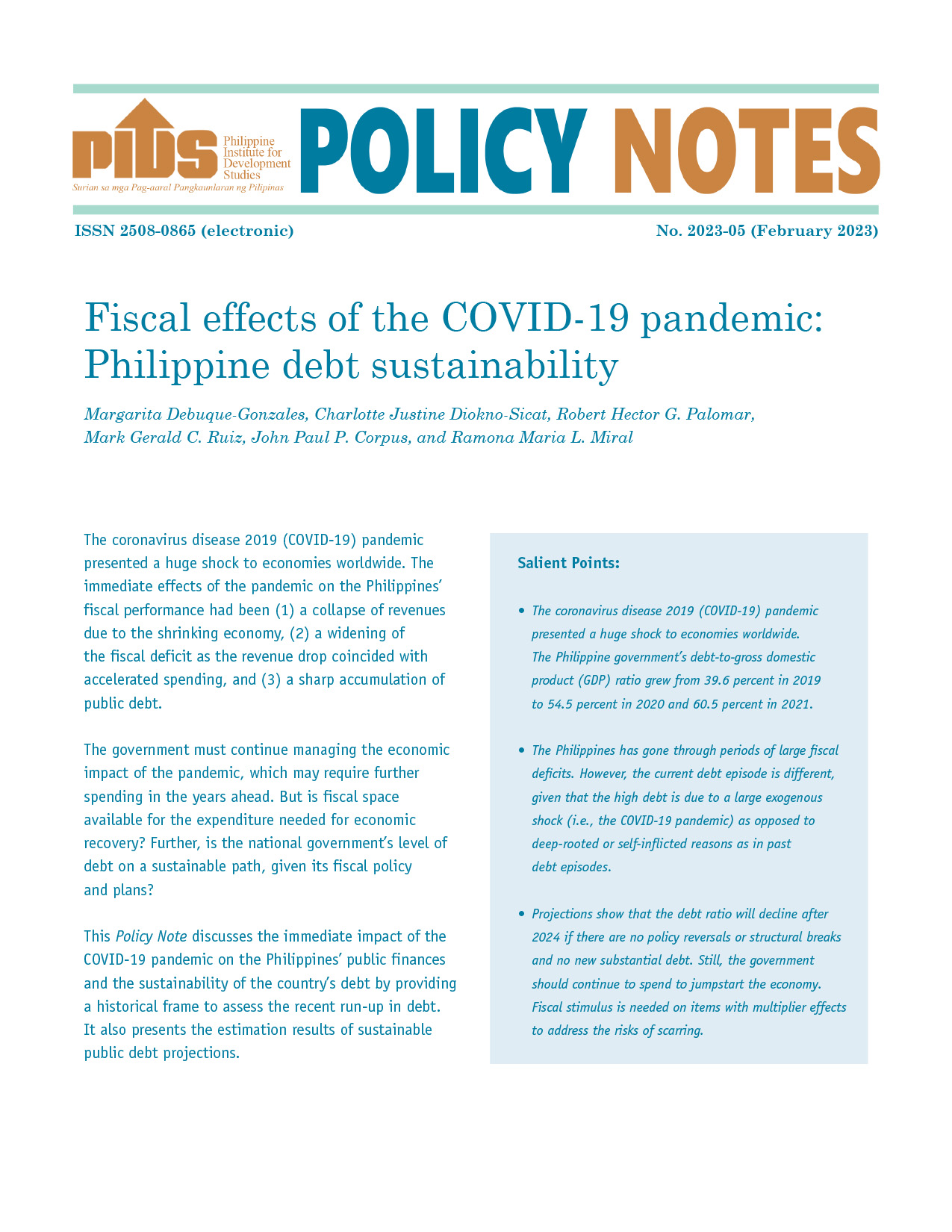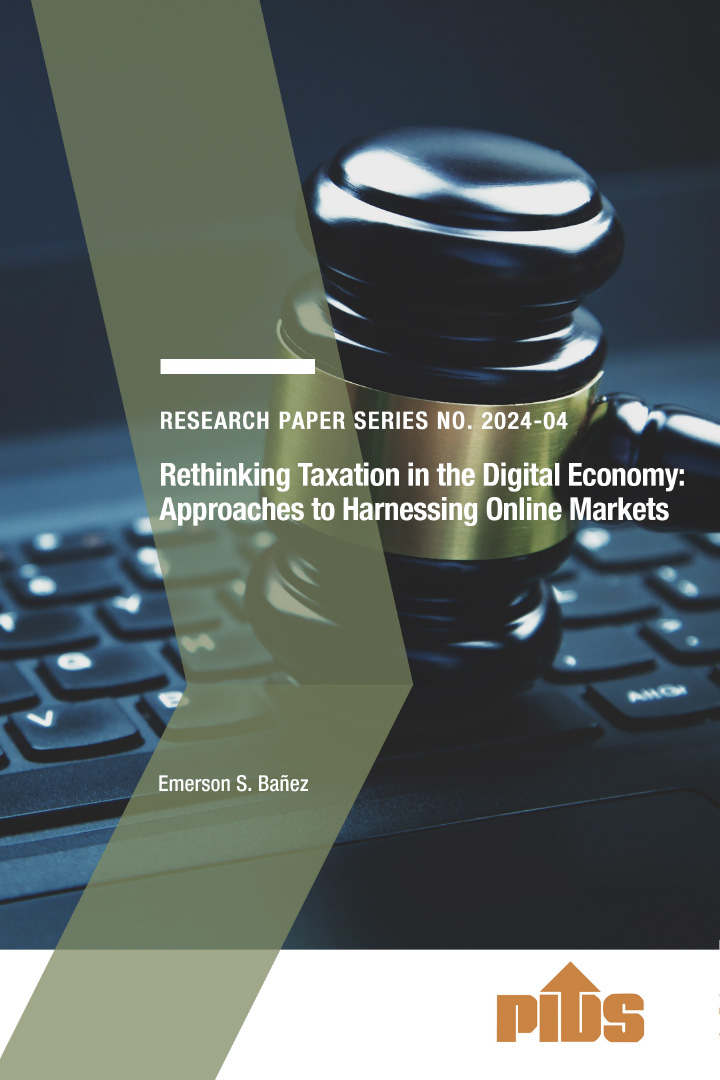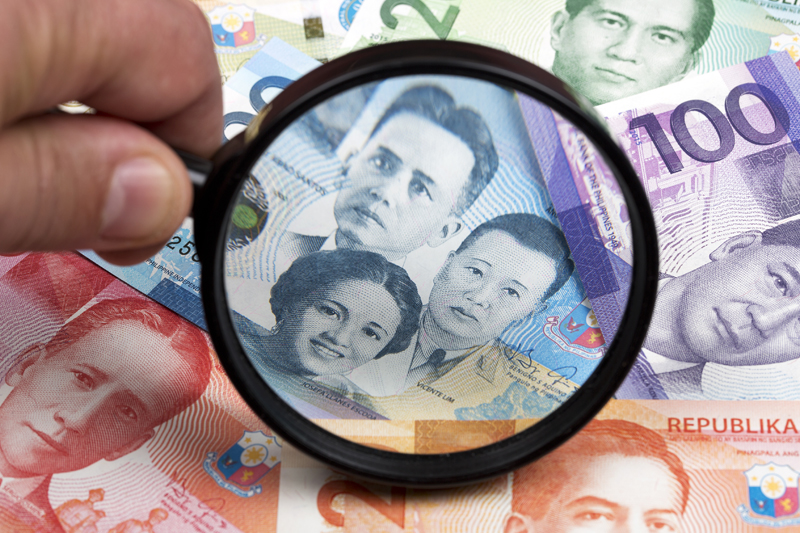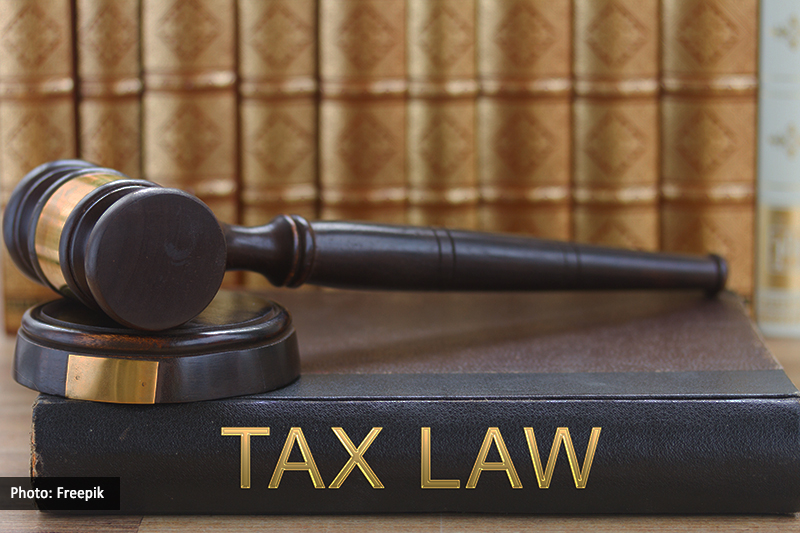MANILA, Philippines—The Philippines’ public debt ratio has been estimated to peak at 66.8 percent of GDP until 2024 as a result of the prolonged pandemic, although the state-run think tank Philippine Institute for Development Studies (PIDS) expects economic recovery to soon outpace the “less worrisome” debt-increase episode wrought by COVID-19.
“In our analysis of the immediate impact of the COVID-19 pandemic and related fiscal responses on the Philippines’ public finances within a historical frame, the most recent debt surge in the country appears less worrisome than earlier debt episodes in that it is not due to sharp interest rate shocks, excessive external debt, or a buildup of hidden (non-budget) deficits, nor a steady decline in the country’s tax effort,” read the PIDS discussion paper titled “Fiscal Effects of the COVID-19 Pandemic: Assessing Public Debt Sustainability in the Philippines” published on May 18. This report was authored by economists Margarita Debuque-Gonzales, Charlotte Justine Diokno-Sicat, John Paul Corpus, Robert Hector Palomar, Mark Gerald Ruiz, and Ramona Maria Miral.
“Instead, debt decomposition shows the surge was driven by an exogenous (pandemic-induced) drop in output growth and a resultant rise in primary deficits as revenues temporarily collapsed and relief and recovery spending by the government accelerated,” the PIDS said.
As such, the PIDS said that once gross domestic product (GDP) growth normalizes or returns to pre-pandemic levels this year, “fiscal deficits will trend downwards, and interest-growth differentials will remain negative, generating favorable conditions for debt reduction in the near to medium term.”
At the end of the first quarter of 2022, the Philippines’ debt-to-GDP — said to be a better indicator of a country’s capability to repay debts — further climbed to 63.5 percent, the highest since 2005’s 65.7 percent, as borrowings outpaced economic growth.
Since the public debt ratio remained above the 60-percent threshold deemed by credit-rating agencies as manageable for emerging markets like the Philippines, other economists had flagged possible downgrades of the country’s investment-grade credit ratings, which make borrowings cheaper for both the government and the private sector.
The elevated debt level also puts pressure on the government’s — especially the presumptive Marcos administration’s — pandemic-induced narrower fiscal space.
Based on computations using the International Monetary Fund’s (IMF) debt sustainability analysis (DSA) framework, which can show debt trajectory during the medium term, the PIDS said it found “the national government debt-to-GDP ratio may remain elevated in the medium-term, peaking at 66.8 percent in 2024 and dipping to 65.7 percent by 2026.”
The PIDS’s estimated debt-to-GDP level by 2024 would be the highest since the 71.6 percent recorded in 2004 (a 20-year high), based on historical Bureau of the Treasury (BTr) data.
But the PIDS said the composition of debts that piled up amid the COVID-19 pandemic augured well to repaying these obligations and bringing their share to the economy lower.
“Since half of the accumulated debt during the height of the pandemic crisis (6.3 out of the 15-percent-of-GDP increase in 2020) comprised cash buffers of government that were built up in the event of a prolonged pandemic (and to benefit from loose monetary conditions), with such behavior continuing to the present, the scope for a future debt decline is wide. Netting the government’s cash reserves, the debt-to-GDP ratio would follow a similar but much lower trajectory,” the PIDS said.
For the PIDS, “it may not be feasible to immediately aim for a low debt ratio to give the economy time and room to recover from the pandemic shock, but nonetheless underscores the importance of a sound medium- to long-term fiscal consolidation plan.”
The PIDS’s analysis also showed that the Philippines and its Asean neighbors “respond to rising indebtedness by improving primary balances; such systematic behavior indicates responsible fiscal policy and already guarantees fiscal solvency.”
“It is therefore crucial that fiscal policy reforms, especially those that were hard-won, remain intact,” the PIDS said.
The proposed fiscal consolidation and resource mobilization plan which President Rodrigo Duterte’s economic team will turn over for the consideration of presumptive president Ferdinand Marcos Jr. will include higher or new taxes under a second round of the comprehensive tax reform program, prioritization of infrastructure spending alongside cuts in non-priority expenditures, as well as economic growth drivers, in a bid to ease the public debt burden.
The national government’s outstanding debt had been projected to hit a new annual high of P13.42 trillion by yearend. Despite expectations of 7 to 9 percent economic growth this year, debt-to-GDP would end 2022 at 60.9 percent, slightly higher than the 16-year-high of 60.5 percent last year.
Before COVID-19 struck, the Philippines’ debt-to-GDP ratio fell to a record-low of 39.6 percent in 2019. But at the height of the health and socioeconomic crises inflicted by COVID-19, the government ramped up its borrowings to beef up its war chest for the protracted fight against the pandemic.
For instance, the Philippines borrowed a total of $2 billion via low-interest loans extended by multilateral lenders last year to buy vaccines and booster shots, in order to inoculate the majority of the population for free. The government had also obtained concessional borrowings to implement programs and projects supportive of recovery from the pandemic-induced economic slump.
COVID-19-related foreign borrowings alone from 2020 at the onset of the pandemic until mid-January 2022 totaled $25.7 billion, or P1.31 trillion, which the Department of Finance (DOF) had said will take 40 years, or about two generations, to repay.

